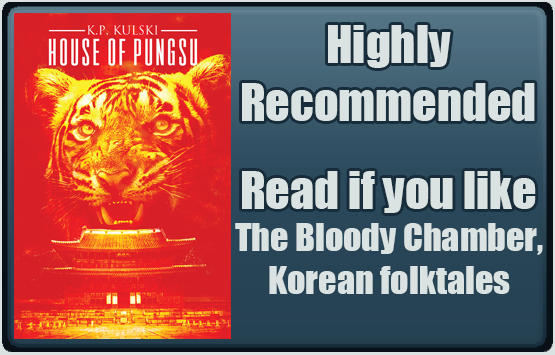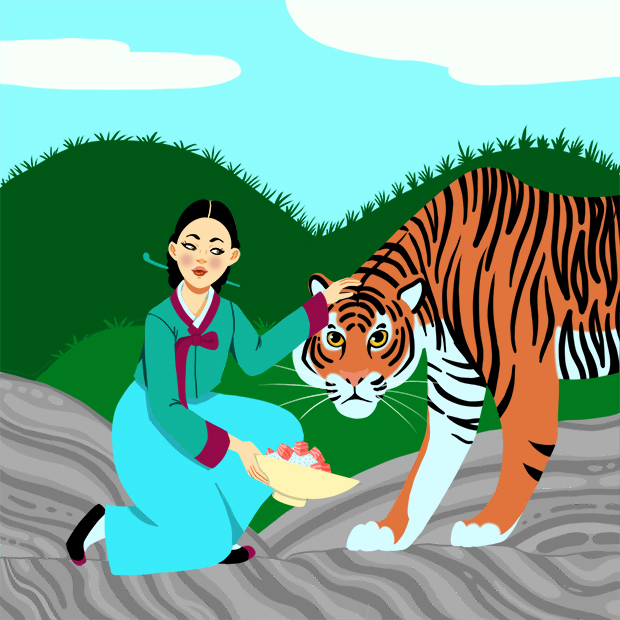Blurb:
| “As sharp as broken pottery and as delicate as a peony petal, House of Pungsu is the story my spirit hungered for. K.P. Kulski shifts rice paper doors to reveal the darkest truth.”—Lee Murray, USA Today bestselling author and four-time Bram Stoker Award® winner. No one knows what’s beyond the walls of the Joseon-era palace that never seems to decay, a sprawling complex where daughter, mother, and grandmother are the only inhabitants. Why is her bed-bound grandmother locked in her room each night, and what exactly is behind the locked doors of the palace pavilions and halls? When daughter unexpectedly begins to menstruate, she is tormented with dreams that drive her to find answers. Following the Korean folk story of “A Tiger’s Whisker,” HOUSE OF PUNGSU is a feminist meditation on women’s inner identity and the struggle to rediscover it. |
Daughter does not remember her real name or her past, only that
she is someone's daughter. She is full of barely contained rebellious spirit
and hope for the future, but she is bound by duty to be obedient and quiet, a
"tame tiger." "Their lives an animal within me that growls... a wild thing that wants to bite its tether yet I do nothing to free it. Instead, I stand very still, say little, and wait for the fury to subside.” Mother is bitter and pessimistic, though still hopes her daughter can one day leave the palace while still believing it impossible. It’s implied she was once the wife of an emperor and not allowed her own hopes, dreams, and aspirations beyond pleasing her husband and bearing his children. Daughter believes that grandmother is confined to her bed, just as she and mother are confined to the
palace, but mother has to lock grandmother in at night, and someone locks the other side of the door. At night, growling and commotion can be heard from the bedroom. It seems grandmother is not as helpless or trapped as she seems, a wild tiger locked up for the safety of mother and daughter.
The tiger motif is repeated throughout the book, as tigers are strongly associated with Korea and found repeatedly throughout Korean folklore. Kulski draws inspiration from one such folktale, The Tiger’s Whisker, a folktale about living with someone who suffers from PTSD. It emphasizes the diligence and patience you must have when working with someone with complex trauma. While on its surface the story seems to be a heartwarming tale of helping a loved one, Kulski notes that the burden is put on the wife to help her husband and have patience when he’s angry and abusive. The wife exists only to help her husband and is expected to suffer with him. In many versions of the tale, she is not even given her own name. And so Kulski creates her own ending, instead focusing on the wife overcoming the fear of the tiger and the husband that once held her back. She asks the question, “What would happen if you released the full ferocity of the tiger rather than tame it?”


No comments:
Post a Comment